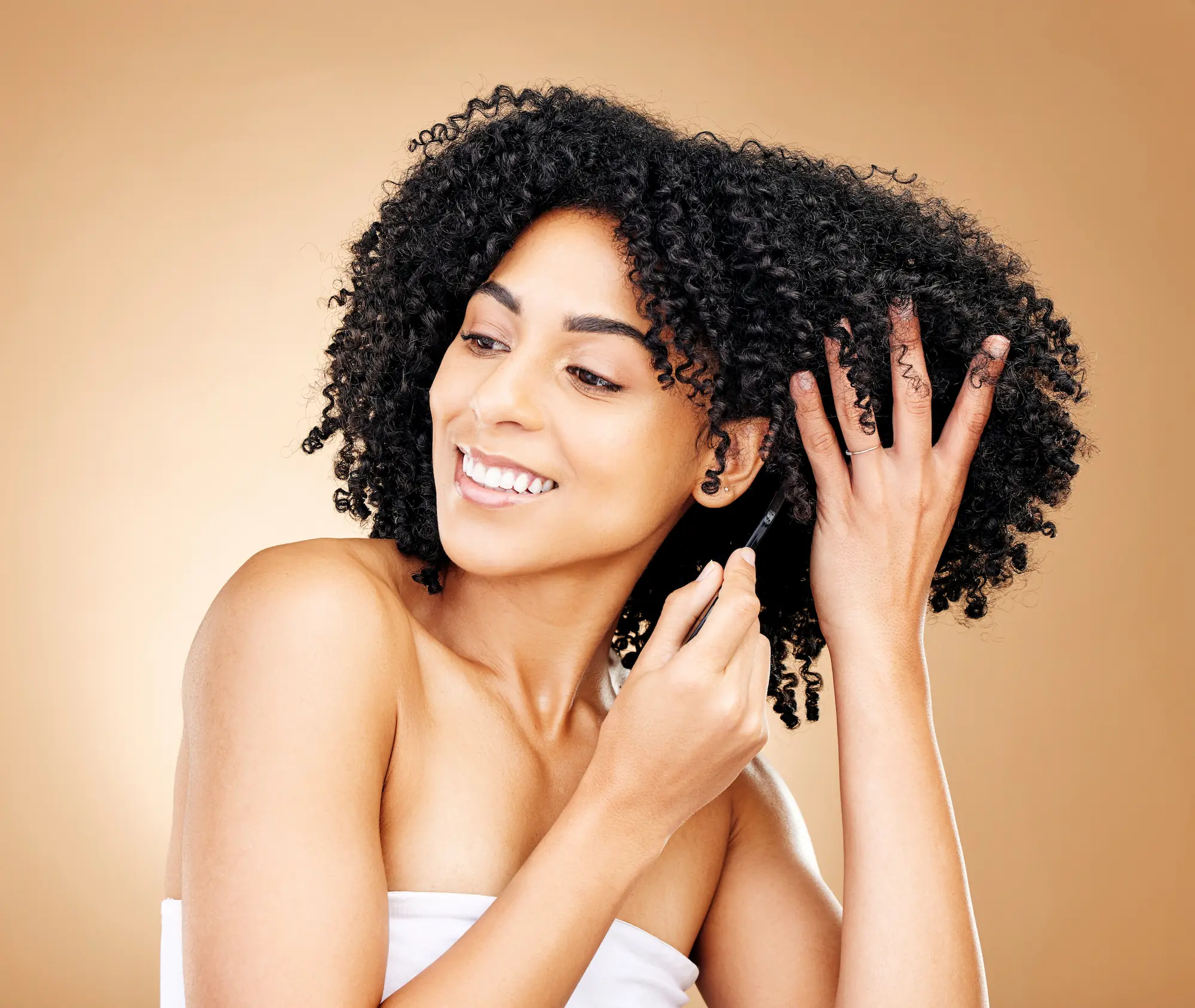Wigs are a fantastic way to experiment with different styles, colors, and looks without subjecting your natural hair to constant manipulation and the risks of damage from styling tools and products.
However, while wearing wigs, it’s essential not to neglect the health of your natural hair underneath.
Here are some comprehensive tips to ensure that your tresses remain strong, healthy, and hydrated while you enjoy the versatility that wigs offer.

1. Clean Hair is a Must
One fundamental principle in caring for your natural hair under a wig is keeping it clean. Dirty hair and scalp can lead to clogged follicles, dandruff, breakage, and even odor issues.
Use a sulphate-free clarifying shampoo to remove product buildup and a nourishing conditioner to hydrate and strengthen your curls. Whether your wig cornrows are in for two weeks or eight, make it a habit to wash and condition your hair every two to three weeks. Schedule these wash days in your calendar to ensure consistency.
2. Moisturize and Seal
Moisture is key to combat dryness and breakage. Apply a leave-in conditioner or lightweight moisturizer to keep your curls hydrated. Seal in the moisture with natural oils like argan, jojoba, or coconut oil for extra protection.
The LOC (Liquid, Oil, Cream) or LCO (Liquid, Cream, Oil) methods are great ways to maintain your hair’s moisture levels. Experiment to see which one works best for your hair type.
3. Protect Your Hair with a Wig Cap
Wearing a wig cap is crucial for protecting your natural hair from friction, which can lead to breakage and hair loss. Opt for a breathable cap made from nylon or mesh, or even a satin-lined cap for extra protection. Ensure that the cap is not too tight to avoid putting strain on your scalp and edges.
4. Regularly Trimming Your Hair
5. Take a Break from Wigs
Although wigs are an effective protective style, your natural hair needs time to breathe. Take off your wig at night or on non-wig days to allow your scalp to rejuvenate. This break helps maintain a healthy scalp and promotes hair growth. Also, schedule regular ‘wig-free’ periods to give your hair a healthy dose of air and sunshine.
6. Deep Condition Regularly
Deep conditioning your hair is crucial for maintaining its moisture and elasticity. Before braiding your hair and wearing your wig, apply a deep conditioner, let it sit for at least 30 minutes, and then rinse thoroughly. This step will prepare your hair to retain moisture until your next wash day.
7. Care for Your Edges
Edges are delicate and require extra attention. Avoid using glue or tight braids that can cause tension and potentially damage your edges. Use bobby pins instead of glue to secure your wig and apply natural oils like Jamaican black castor oil or lavender oil to stimulate growth. Regularly moisturize and massage your edges to keep them healthy.
8. Create a Sleek Base
Preparing your natural hair for wig-wearing involves creating a smooth, sleek base. Loose cornrows or flat twists are ideal, as they keep your hair flat without causing excessive tension. Tight braids can lead to traction alopecia, so ensure that the style under your wig is not too tight.
9. Oil Your Scalp
10. Don't Sleep in Your Wig
Sleeping in your wig can cause tension and friction, leading to breakage. Always remove your wig before bed to give your hair and scalp a chance to breathe. Secure your natural hair with a silk or satin bonnet or scarf to reduce friction and retain moisture.
11. Avoid Damp Hair Under the Wig
Wearing a wig over damp hair can create an environment conducive to bacterial growth and mildew. Always ensure your hair is completely dry before putting on your wig. This prevents the buildup of bacteria and keeps your scalp and hair healthy.
12. Use Quality Wigs and Adjust Straps
Invest in high-quality wigs that are gentle on your hair. Adjust the wig straps to ensure they are secure but not too tight to avoid friction and tension on your edges and scalp. Also, opt for glue-less or closure units, and avoid adhesives and heat applications that can stress your hairline.
Conclusion
Wigs provide a wonderful opportunity to explore different styles without damaging your natural hair. However, the health of your natural tresses depends on how well you care for them while they are tucked away.
By following these comprehensive tips, you can ensure that your natural hair remains healthy, strong, and hydrated under your wig.
Remember, the ultimate goal is to enjoy the versatility of wigs while maintaining the integrity and wellness of your natural hair. Happy wig-wearing!






